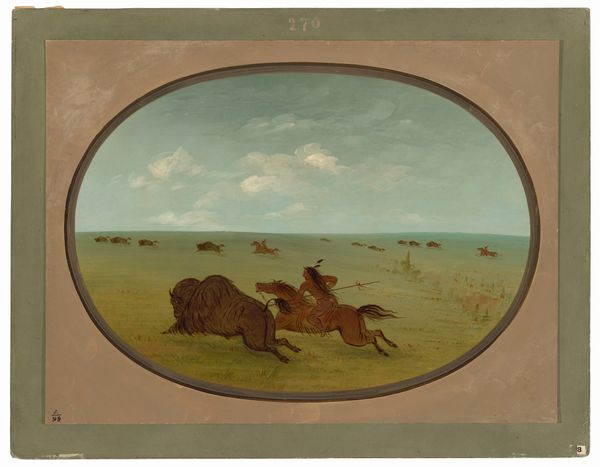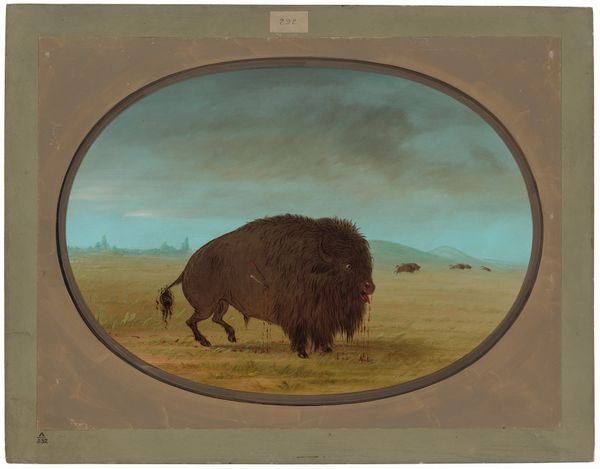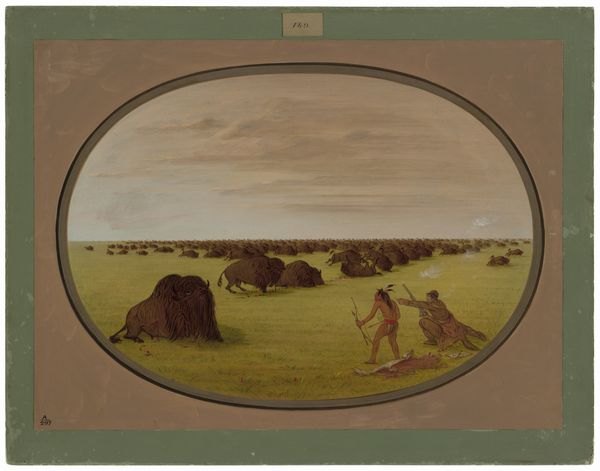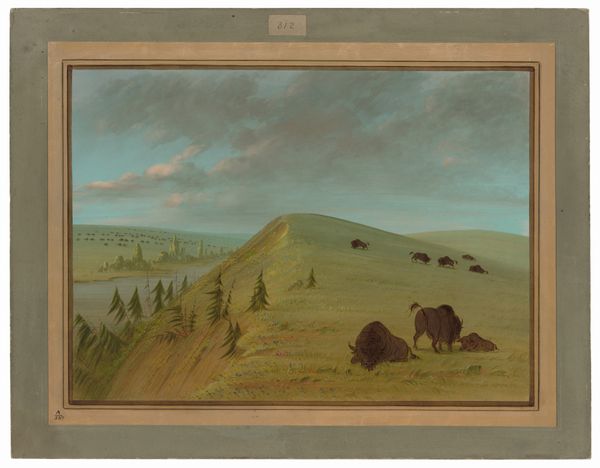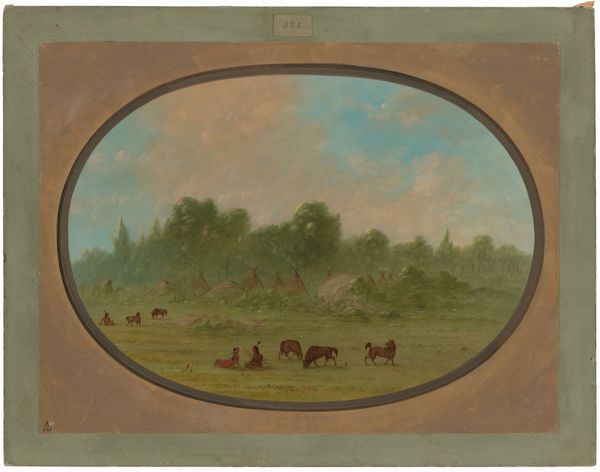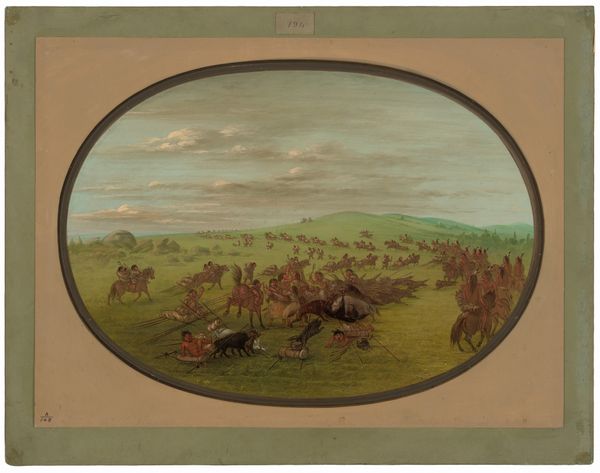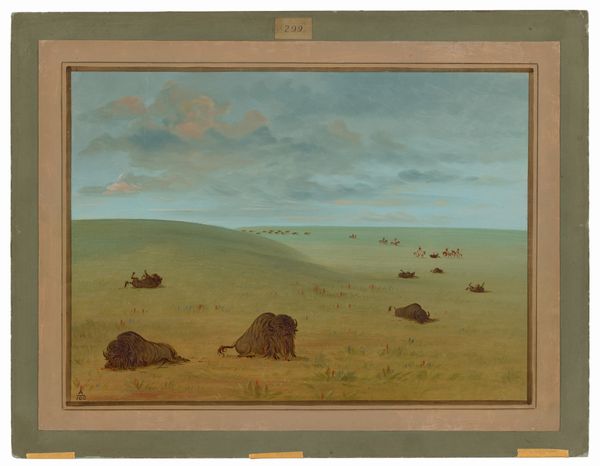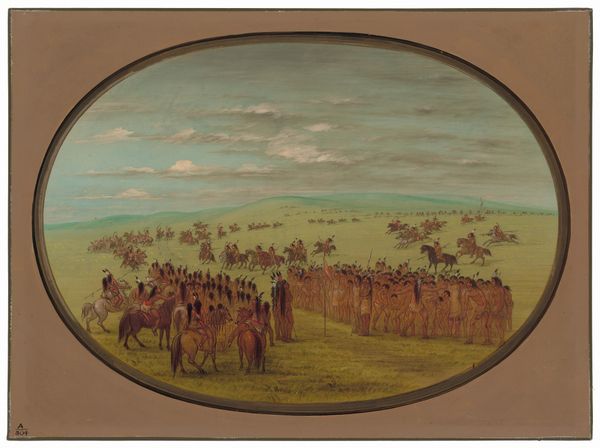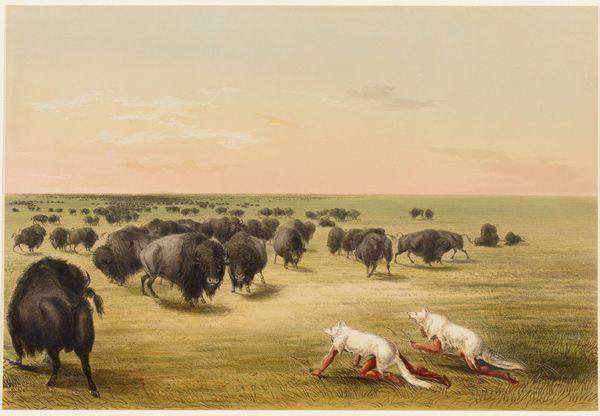
#
toned paper
#
water colours
#
handmade artwork painting
#
oil painting
#
coffee painting
#
underpainting
#
painting painterly
#
watercolour bleed
#
watercolour illustration
#
watercolor
Dimensions: overall: 46.2 x 62.3 cm (18 3/16 x 24 1/2 in.)
Copyright: National Gallery of Art: CC0 1.0
Curator: Here we have George Catlin's "Buffalo Chase, with Accidents," created between 1861 and 1869. Editor: What a dynamic scene! It feels frantic and desperate, almost like watching a dust cloud of bodies in motion. I'm immediately drawn to the close proximity between humans and the animals, both as subjects of a brutal encounter. Curator: Indeed. Catlin used watercolors and toned paper to capture this hunt. Notice how the application of the paint is quite loose and gestural. It gives a sense of immediacy and roughness, reflecting the energy, labor, and even the chaos inherent in the hunt. Editor: I see that, and the oval framing also seems significant. It's a kind of imposed European perspective onto a decidedly American scene. Was this piece meant for display within a specific institutional or social context? Curator: Catlin aimed to document Native American life before, as he feared, it vanished. He saw himself as preserving a vital cultural record. The framing is interesting because while he's seemingly trying to record an untouched world, he inevitably approaches the scene with his own cultural framing. Editor: So the intention behind the representation, to create something of a visual record, became intertwined with the political narrative of vanishing cultures? How much control over their image did these communities have? Curator: Very little, which highlights a real issue. Catlin was driven by the conviction that he was being a sort of caretaker of their images. However, his art became enmeshed in the historical context of settler colonialism, impacting Indigenous agency in representation. The paintings themselves became evidence in arguments about Native sovereignty, self-determination, and cultural integrity. Editor: I’m thinking now about the materiality of buffalo. They served as essential supplies. Were Catlin's paintings also intended to speak about land and resource distribution? Curator: It's clear that Catlin’s art became intertwined with power dynamics affecting Native American cultures. Viewing practices influence public attitudes. How often do people realize they are contributing to narratives around the depicted cultures and the hunt's place in the food economies simply by taking these artworks in at museums? Editor: Food for thought, Curator, both visually and literally! Understanding this context gives the artwork a somber quality beyond the apparent energy. Curator: Indeed. Considering that the creation, circulation, and even viewing of artworks can profoundly affect social justice and human representation offers much to examine within "Buffalo Chase, with Accidents."
Comments
No comments
Be the first to comment and join the conversation on the ultimate creative platform.

